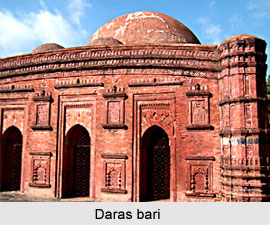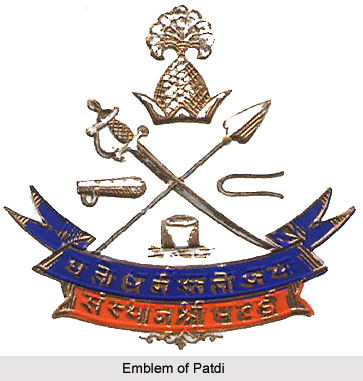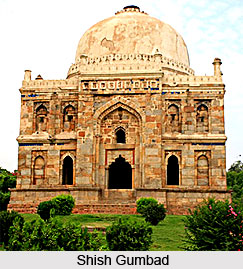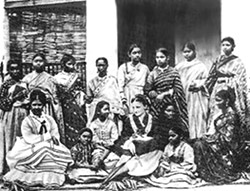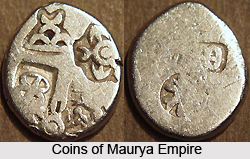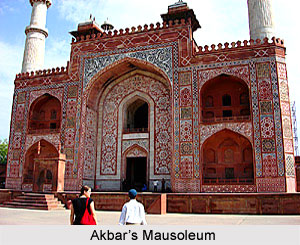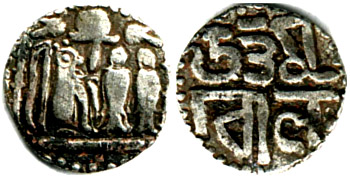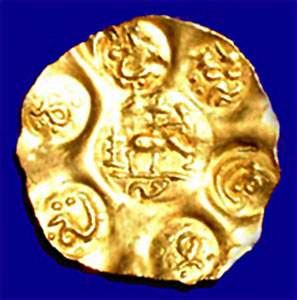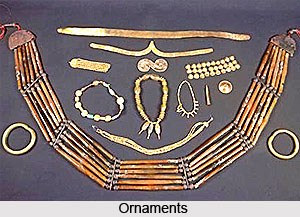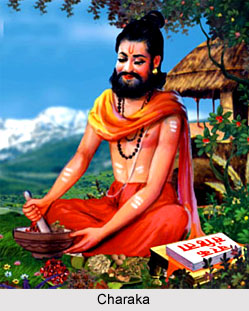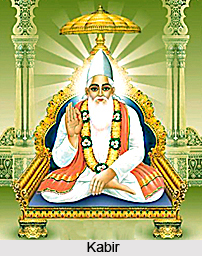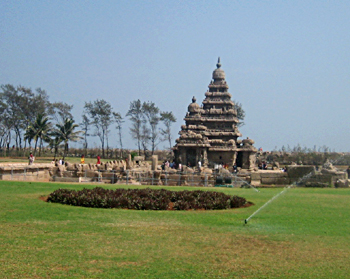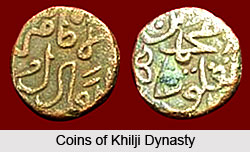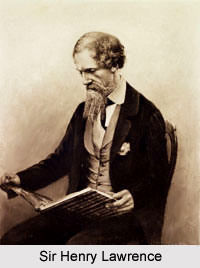 Sir Henry Lawrence on the 1st and 2nd of July, was concentrating his troops within the Residency of Lakhnao (present day Lucknow, Uttar Pradesh). He had, on the evening of the 1st, caused the Machchi Bhawan to be blown up. And its garrison, guns and treasure were withdrawn to the enclosure, which he had fixed upon as the place most capable of offering resistance to the rebels. Within that enclosure he had, on the morning of the 2nd of July, 535 men of the 32nd foot, fifty of the 84th, 89 artillerymen, 100 English officers attached to the loyal sipahis, 153 civilians, covenanted and un-covenanted servants of the State, and 765 natives. The place these held was, from a military point of view, not defensible. The slight fortifications, in the shape of earthworks, were still incomplete. Whereas, in a little distance were houses capable of being occupied in force by the rebels. The west and south faces of the enclosure were practically undefended.
Sir Henry Lawrence on the 1st and 2nd of July, was concentrating his troops within the Residency of Lakhnao (present day Lucknow, Uttar Pradesh). He had, on the evening of the 1st, caused the Machchi Bhawan to be blown up. And its garrison, guns and treasure were withdrawn to the enclosure, which he had fixed upon as the place most capable of offering resistance to the rebels. Within that enclosure he had, on the morning of the 2nd of July, 535 men of the 32nd foot, fifty of the 84th, 89 artillerymen, 100 English officers attached to the loyal sipahis, 153 civilians, covenanted and un-covenanted servants of the State, and 765 natives. The place these held was, from a military point of view, not defensible. The slight fortifications, in the shape of earthworks, were still incomplete. Whereas, in a little distance were houses capable of being occupied in force by the rebels. The west and south faces of the enclosure were practically undefended.
The bastion started out at the angle of the two faces having been left unfinished. The position may roughly be described as comprising a number of houses built for ordinary domestic purposes, separated originally from one another by small plots of ground. But they were presently roughly united by mud walls and trenches. These houses were contained in a space called, from the chief house within it, the Residency, 2,150 feet long from north-west to south-east, and 1,200 broad from east to west. The defences, beginning from the Baillic guard at the easternmost point, and continuing northward, were (1) Alexander`s battery, (2) the water-gate battery, (3) the Redan battery, (4) a palisade. From that point southward there followed (1) Innes`s garrison, (2) the bhusa guard, (3) Gubbins`s garrison and Gubbins`s battery, (4) the Sikh square. From there eastward were (1) the Kanhpur (Kanpur) battery, (2) Thomas`s battery, (3) Anderson`s garrison, (4) the post-office garrison, (5) the judicial garrison, (6) Sago`s guard, and (7) the financial garrison.
The defences were not complete when the blockade began. They were, at the best, very rough, run up under great difficulties. It was only gradually that the several houses and their occupants came to be distinguished by the names.
From the day when Lawrence concentrated his troops within the enclosure, the fire of the rebels upon it had been uninterrupted. The mutinous sipahis (soldiers), the old aristocracy, the dispossessed landowners, the dissatisfied middlemen in the districts - everybody contributed their quota to the memorable besiege. Night and day, from the tops of the houses in close vicinity to the entrenchment, from every point where cover was available, they poured in an unremitting fire of round-shot, of musketry, of matchlock balls. From the howitzers they had lifted from the British, they sent shells whooshing into the Residency itself.
Sir Henry Lawrence had occupied in the Residency a room convenient for noticing the movements of the enemy. But, it was much exposed to their fire. Seated in this room, the day after the fight at Chinhat, he was conversing with his Secretary, Couper. He was startled by the bursting of an eight-inch shell within the room. No harm followed the explosion, but the danger to the most valued life in the garrison made a deep impression on his staff. Sir Henry at length agreed to remove to a less exposed room the following day. The following morning, 2nd July, he went out early to arrange the disposition of the force which had come in from Machchi Bhawan. He returned, tired, about eight o`clock, and lay on his bed while transacting business with his Adjutant-General, Captain Wilson. Lying near him was his nephew, George Lawrence. Suddenly there came a sheet of flame, a terrific report and a shock, followed by intense darkness. It was a shell from the howitzer which had been fired in the morning. It left George Lawrence, as it burst, unscathed. It tore off the shirt from the back of Captain Wilson, and left Sir Henry Lawrence mortally wounded. He lingered in excruciating agony to the morning of the 4th, and then expired.
The death of this great man was felt by the garrison as a loss irreparable. They felt, one and all that they could best prove their respect for his memory by carrying out their stern defence on the lines he had laid down. He was succeeded, as chief commissioner, by Major Banks, an officer of rare merit, who had been his friend and confidant. The command of the troops, however, passed upon Brigadier Inglis of the 32nd.
While Havelock was fighting his way from Allahabad to Kanhpur (Kanpur), the garrison of the Residency was exposed to the unremitting attacks of an enemy vastly superior to it in numbers and strength of position. From the very outset, the damage done to life and material were great. Sir Henry Lawrence, the prominent of all, passed away on the 4th of July. Several other officers were either killed by shell firing, or succumbed to mortal diseases later.
Nor was the damage less to the materials, which formed the component parts of the defences. On the 15th, Anderson`s house was entirely destroyed by round-shot. The garrison, however, still continued to hold the ground on which it had stood. On the 18th, many round-shots were fired into the post-office, Fayrer`s house, commanded by Gould Weston, Gubbins`s house, and the brigade mess-house. At one time the rebels almost had succeeded in setting fire to the Residency house by means of carcasses.
The difficulties the garrison had to grapple with were colossal. They had, in addition to the work of active defence, to dig out and carry stores, to shift guns, to dig trenches, to sink shafts for mines, to bury the dead, especially dead animals, whose putrefying carcasses fouled the air, to repair damages. In all these duties the officers shared equally the labours with the men, and exerted themselves to the extreme. Sometimes they made a sortie. They attempted the first on the 7th of July. The incursion party succeeded in driving out the enemy from a position they held commanding the defences.
The casualties of the officers and others up to the 20th were utmost, because on that day the rebels made their first grand assault. Their movement began at half-past eight in the morning. It was sustained robustly for several hours, and was finally beaten back at four o`clock. Several officers and men covered themselves with glory. The garrison here consisted of twelve men of the 32nd foot, twelve of the 13th N. I., and some clerks. They drove back an enemy vastly superior in numbers. Another attack, made simultaneously against the Redan, was pushed back with equal courage and determination.
The result of that day`s action, doubtless, greatly encouraged the garrison. Their losses - four killed and twelve wounded, had been small, while the casualties of the rebels had been severe. The day following however, they suffered bereavement second only to that which they had experienced when Sir Henry Lawrence died. His successor, Major Banks, when reconnoitring from the top of an outhouse, was shot dead through the head. He had been an invaluable colleague to Brigadier Inglis, and it was felt there was no one left who could replace him. The office he had held was accordingly left vacant until the Government of India could be communicated with.
The garrison had no certain knowledge of the events passing at Kanhpur (Kanpur). They had despatched many letters by native messengers believed to be faithful, but up to the 25th of July no reply had been obtained. Three days previously, however, their most trusted messenger, a pensioned sipahi named Ahgad, arrived to state that he had seen the victorious English regiments at Kanhpur (Kanpur). But it was not till the 25th that the same messenger, who had been sent out again, returned with a letter from Tytler saying that `Havelock was advancing with a force sufficient to bear down all opposition, and would arrive in five or six days.` Inglis replied by despatching through Angad, to Havelock a plan of his position and of the roads by which it could be approached. This reply reached Havelock at Mangalwar, a village five miles from the Ganges, in the province of Oudh. To reach Lakhnao (Lucknow) there still remained forty miles to traverse.
Neill had joined Havelock in Kanpur, with a few troops, on the 20th of July. Five days later Havelock crossed the Ganges with the intention of endeavouring to relieve the Residency. In the interim between the two dates he had despatched Major Stephenson to destroy Bithor, evacuated by Nana Sahib and his troops. Stephenson burned down the palace, blew up the magazine, and brought back to Kanhpur (Kanpur) twenty cannons abandoned by the Nana. Simultaneously Havelock had designed, armed, and almost finished at Kanhpur (Kanpur) a fortified work overlooking the river, large enough to accommodate the 300 men. The command of these he entrusted to Neill. He had begun, on the 21st, his preparations for crossing the river. For this purpose, Havelock had sent over his guns on that day, the infantry on the succeeding days. On the 25th he crossed himself, and moved that day to Mangalwar. There he halted to complete his arrangements for the carriage of his ammunition and supplies. These were completed by the 28th, and Havelock made his first move onwards the following morning.
For the purpose, which he had in view, his force was minor indeed. It was composed of less than 1,500 men, of whom barely 1,200 were Europeans. Havelock`s cavalry consisted of sixty volunteers and mounted soldiers, his artillery often small field-pieces. His infantry were in the portions of the 64th, the 84th, the 78th, the Madras Fusiliers, and Brasyer`s Sikhs.
At five o`clock, on the 29th, this little force began its forward movement. After a march of three miles, Havelock recognised the rebels occupying a strong position in front of and in the village of Unao. From this point he repositioned them after a fierce conflict, in which they lost fifteen guns and around 500 men. He then pushed on to Bashiratganj, six miles distant. Bashiratganj was a walled town, intersected by the high road. Its entrance was protected by a turreted gateway, with lateral defences, and a wet ditch in front. Still more to the front of it was a large jhil, or shallow pond, while another, still larger, lay behind the town, on the road to Lakhnao (Lucknow), crossed by a narrow causeway. Havelock conceived the idea of sending round the 64th to interrupt the enemy from the causeway, as he should assail it in front. Unfortunately the turning movement took longer than was expected, and the troops with Havelock made their front assault before the 64th had completed it. The result was that, though the rebels suffered severely, the bulk of them escaped across the causeway.
The British loss in the two actions had been brutal also. Eighty-eight men had been placed out of action, and 88 men represented nearly a twelfth of his European fighting strength. A nearly equal number of sick reduced that strength still further. Havelock had used up, too, one-third of his gun ammunition, while he had fulfilled but fifteen miles out of the forty-five necessary to traverse. In front of him were positions, which would be held against him still more consistently, and by a greater number of troops. There was no way in which he could carry the sick and the wounded. He could not leave them, because he could spare no troops to guard them. Just at the moment moreover, he had received information of the fatal mutiny at Danapur. It was a consequence of the foolishness of the Calcutta Government, which came at the moment to add dreadfully to the existing complications. There were, also, rebel troops in the districts, any number of whom combining might, if Havelock were to advance further, cut him off from the Ganges. Feeling that these difficulties were too great to be encountered with the force at his disposal, he fell back, on the 31st, to Mangalwar. From there he despatched his sick and wounded into Kanhpur (Kanpur), with a letter to Neill informing him of the reason of his retreat. Havelock also added that, to enable him to reach Lakhnao (Lucknow), it was necessary he should receive a reinforcement of 1000 men and another field-battery.
To this letter Neill wrote a most intemperate, even an impertinent reply. Havelock was hugely annoyed. He contented himself, however, for the moment with warning Neill that circumstances of the public service alone prevented him from placing him under arrest. At all events Havelock did attempt a second forward movement. Setting out on the 4th of August, he found himself the following morning in front of Bashiratganj. He occupied it, but could not prevent the rebels from carrying off all their guns, and taking a strong position a little further on. He then discerned that to advance further would in all probability involve the loss of his whole force. Strengthened by the opinion of the three officers of his staff whom he consulted, Tytler, Crommelin, and young Henry Havelock, he determined then to recede. He had once again reached Mangalwar, on the 10th, when he heard that the rebels were making a great show at Bashiratganj. Glad to seize the chance of inflicting upon them a severe blow before he should cross, he promptly marched on that place, caught his enemy, and killed 200 of them. From there, Havelock captured two guns. Then turning again, he re-crossed the Ganges into Kanhpur (Kanpur) on the 13th. There he read the details of that insane action of the Government of India by which the much wanted and needful reinforcements had been withheld from him at the most critical juncture of his command.


